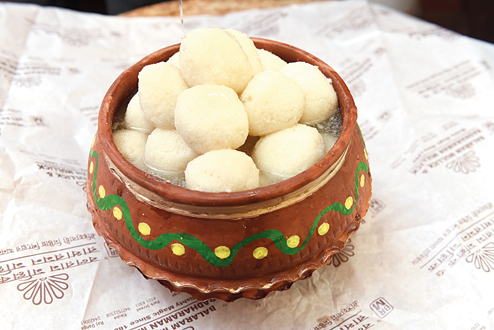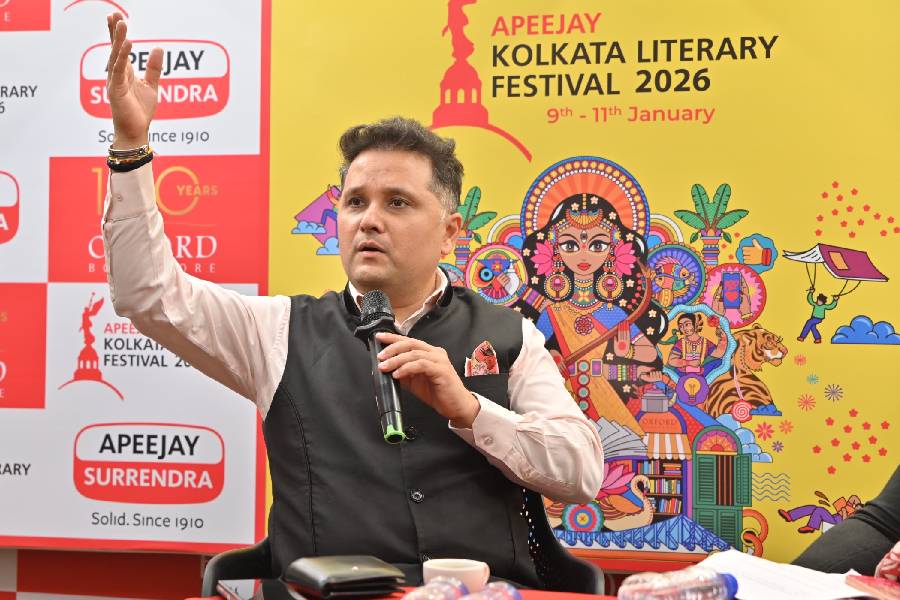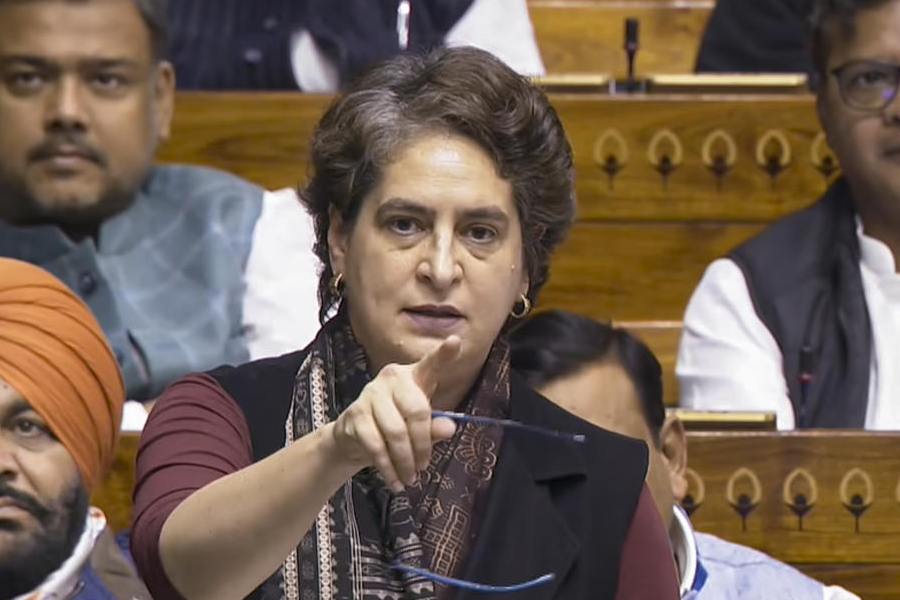What’s in a name? Ask Rosogolla!
It’s defined by its shape — ‘golla’ meaning sphere — and that’s the biggest handicap for rosogolla, feel some mishti makers. By the virtue of the raw material too (more on it later), the rosogolla cannot be moulded into a square, triangle, pyramid or cylinder, like the sandesh. K.C. Das Pvt Ltd, which is famous for their tinned rosogollas, has capitalised on the first half of the name — roso derived from ‘rosh’, meaning syrup — to help rosogolla retain its pride of place. “Rosogolla is the base for many sweets that we often club as rosher mishti (sweets made with a sugar syrup) as opposed to sandesh, which is essentially dry,” says Dhiman Das of K.C. Das. We’re thinking Chamcham!

Sandesh has always sold more than Rosogolla...
For the simple reason that there are different varieties of sandesh, making up the lion’s share of the menu in any sweet shop. Case in point: Between the two, rosogolla accounts for only 10 per cent of mishti sales at Nalin Chandra Das & Sons, a 180-year-old shop in north Calcutta. And? Girish Chandra Dey and Nakur Chandra Nandy, the iconic Bengali sweet shop in Hedua famous for its Golapi Pera and Nolen Gurer Sandesh, does not sell rosogolla.
Sandesh scores over Rosogolla because...
The mix of chhana (cottage cheese), kneaded into a paste, and sugar in sandesh lends itself to all kinds of experimentation, unlike the porous chhana-sugar combo in rosogolla. Kora paak, norom paak, mixed with crushed chocolate or mango pulp… it can be what you will it to be. “We have at least 60 varieties of sandesh on our shelves any given day, as opposed to only five or six types of rosogolla. You can’t do much with rosogolla,” says Sudip Mullick of Balaram Mullick & Radharaman Mullick, which has six outlets across the city.
Why is Rosogolla so stand-offish by nature?
“That’s because there are a lot of specifications for making rosogolla. First, it has to be a porous chhana ball with sufficient moisture-containing pores. And the chhana shouldn’t be in a paste form; a little coarseness is necessary. Then you need a sugar syrup, which is 66.6g of sugar in 100ml of water. You have to boil the chhana balls in that syrup at 100 degrees Celsius. If you mix anything like suji or mango pulp with the chhana, the ball will break when tossed into the boiling syrup,” says Tapan Das of Nalin Chandra Das & Sons. #NotReadyToMingle

Hmm... but there’s definitely something going on between Rosogolla and Nolen Gur!
Drop in at Mithai (at Beckbagan or in Gariahat) and tuck into some Gurer Rosogolla — rosogolla dipped in nolen gur instead of sugar syrup — to know just how delicious this pairing is. The Baked Rosogolla, which is coated in a thick layer of gooey nolen gur, has upped the sale of rosogolla by “50 per cent” at Balaram Mullick & Radharaman Mullick since it was introduced in 2001. It is the traditional rosogolla baked with a coating of condensed milk and jaggery. “In 1990, we used to sell around 500 pieces of rosogolla a day. In 2004, the count was around 1,000 pieces. Currently, we are selling at least 5,000 pieces,” says Sudip of Balaram, who has installed a rosogolla-churning machine to increase production.
Well, Rosogolla is okay with getting a colour shot too...
Infusing the white rosogolla with different flavours and making it colourful is a recent, popular trend to create variations. Gokul Shree Rasgulla Shop near Lansdowne Market introduced around 20 types of flavoured rosogollas, coloured with herbs, roots and fruits in April. On its list are Pomegranate and Mint, Ginger, Kesar Cardamom, Green Chilli, Rose Petal and more.
So has Swati Saraf, who has created “more than 100 flavours”, some pretty unusual, like karela, clove and kiwi. “I don’t add a lot of sugar because chhana is essentially high protein. I don’t add colour or preservatives either. Rosogolla is what Bengal is famous for and I want the young people to come back to it,” says the 32-year-old entrepreneur who sells Flavours of Rasgolla out of her home in Active Acres Tower.

Did you know?
The go-to mishti for the Nandy family of Girish Chandra Dey & Nakur Chandra Nandy for any special occasion is rosogolla, though they do not sell it at their shop. Where do they like their rosogolla from? “It’s either Chittaranjan (Mistanna Bhandar) or K.C. Das,” said Partha Nandy of Nakur.
Bag it
Fliers can carry packs or cans of rosogolla only in their registered luggage. Only rosogolla tins picked up from the Biswa Bangla store inside the security hold area of Calcutta airport can be carried in hand baggage.
Some like it hot
In many Bengali households, a hot rosogolla is often the antidote for a troubled tummy!
Sponge
According to food lore, mishti maker Nabin Chandra Das invented the “sponge rosogolla” in 1868 in Bagbazar, after six years of experiments with cottage cheese. Das was the first to come up with a ball that was soft all over, unlike the other forms of rosogolla which had a hard centre.

Sibendu Das
Pictures: Rashbehari Das and Chanchal Ghosh










